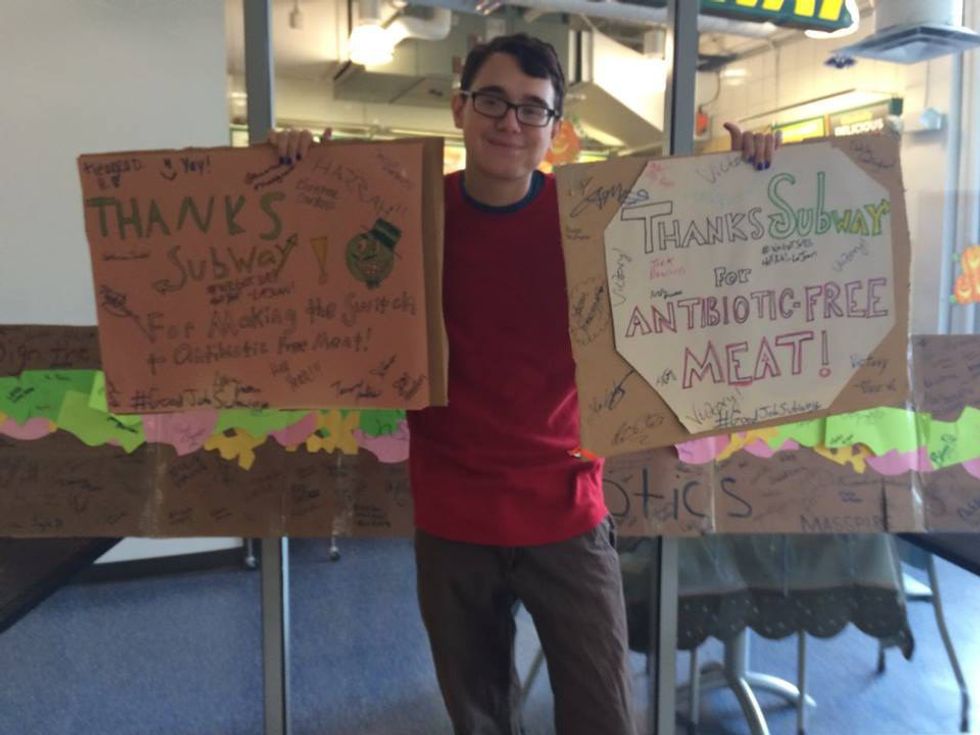During my spring semester my freshman year of college, I joined the my school's chapter of MassPIRG (an arm of the Public Interest Research Group) as the Campaign Coordinator for the Save Antibiotics campaign. In the fall, it became our chapter's lead campaign, and I soon saw myself mentioned in iBerkshires and Infowars, as we garnered national victories.
Since then, I have moved on to other things, such as increasing my involvement on my student newspaper, directing my campuses's Film Club through its first official year, and obtaining a job at New England Newspapers as both a page paginator and freelance writer.
However, my lessons from MassPIRG have stuck with me, especially those pertaining to leadership positions. Here are five of them.
5. As a leader, it is your job to make your organization a working machine
A successful organization should not overly rely on any one person; it should be a cohesive unit, full of people who can step up if one cog in the machine fails. It should not sink or swim based off of any one person's presence, and there should always be a plan B if things don't go right.
A leader's job is not to do all or most of the work. A leader should still be incredibly active, but his/her job is mostly to know who's doing what, who can do what if that person can't for whatever reason, and what to do if the what doesn't work out.
4. Pitch people with leadership positions when you can
A good leader makes sure all those who want to and are able to step up get a fair shot at doing so. Sometimes this means actively keeping an active list of secession in mind. It means talking to those below you, finding what their strengths and weaknesses are, and using them to the best of their ability.
If a position they want doesn't exist, you can make it, especially if you're dealing with volunteers. All this will do is take some stuff off someone else's plate, so it can be done better somewhere else. In the professional world, I've experienced this in the reallocation of tasks, usually in the form of tasks that aren't assigned to anyone in particular until someone passionate about them steps in.
3. Make your relationship with colleagues collaborative
Be open to ideas! I use this one every day as a newspaper designer, as stories don't always fit and layouts don't always work out, and it's up to me and the editor to troubleshoot a solution. We share ideas, I make it clear what we can and cannot do by good design principles, and we make a finished product together.
You and your colleagues have good ideas. The ideal work environment, in my experience, is where these ideas can freely flow.
During my MassPIRG campaign, this was a must, as issues happened left and right, and it took the ideas of people above and below me to get it right.
2. You need more than an idea, you need a plan
Ideas are great, but not all of them are feasible. Try to see ideas more as goals than something that will happen automatically.
With any campaign or organization, you are going to hit bumps and glitches. The way you bring your ideas to life will change, but as long as you don't lose sight of what your original vision was, you can always make the best of it.
However, be weary of other people twisting your ideas into something they're not. It's a risk you take when you work with people.
1. Have a strong vision for what you set out to do
Whatever our profession, we all have a strong reason for doing what we do. Some people write and perform because they like to make people laugh. Some people enter journalism because they want to do a public good. Some become activists because they want to change the world.
Whatever your reason, don't lose sight of it. Your journey to be the best you you can be will not be an easy one; few things worth doing are.
Endure, march on, and greet the future and its challenges with open arms.












































